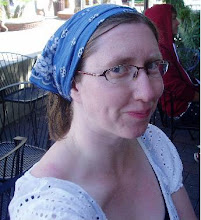Null Hypothesis (what we assume is true if we cannot prove otherwise): A spoon has no effect on the bubbliness of a bottle of champagne.
Alternative Hypothesis (what we are trying to prove): A metal spoon placed in the mouth of a champagne bottle overnight keeps the champagne more bubbly.
We will accept the null hypothesis if the majority of study participants note that a champagne stored in a bottle with a metal spoon is more bubbly than champagne stored in a bottle with a plastic spoon or no spoon.
Methods
Four bottles of Schloss Biebrich were purchased at Trader Joe’s on Wednesday, April 8, 2009. Four bottles of Ballatore were purchased at Safeway on Thursday, April 9, 2009. All eight bottles were kept at room temperature until 8:30 pm on Thursday, April 9. At this time, the four bottles of Schloss Biebrich were placed on the top shelf of the refrigerator, upright. The four bottles of Ballatore were placed on the second shelf of the refrigerator, also upright.
At 5:15 on Friday, April 10, 2009, all of the bottles of Schloss were removed from the refrigerator. Three of the four bottles were opened. Each of these three had 0.25 cups of champagne removed. Of these three, one received no treatment, one had a metal spoon placed in its mouth, and one had a plastic spoon placed in its mouth. All four bottles were placed back in the refrigerator at 5:20 pm.
At 5:30 pm, the bottles of Ballatore received the same treatment.
At 1:50 pm on Saturday, April 11, 2009, all eight bottles were removed from the refrigerator. The two unopened bottles were opened and a quarter of a cup of champagne was removed from each. The spoons were removed from each of the remaining bottles, if applicable, and a researcher labeled each bottle of Schloss 1 through 4, and each bottle of Ballatore 1 through 4, in no particular order. This researcher kept a list of the numbers corresponding to each treatment. The researcher then left the kitchen.
Another researcher, out of sight of the original researcher, relabeled the bottles A – D in no particular order, for each of the types of champagne. This researcher kept a list of the numbers corresponding to each letter.
Because of this process, both researchers and all participants were blind to the treatments performed on the champagne, until the lists were later compared and reconciled.
Each participant was given eight plastic cups, filled to a pre-marked line, labeled SA, SB, SC, SD, BA, BB, BC, and BD. Participants were instructed to rate the champagnes in order of bubbliness, comparing SA, SB, SC, and SD to each other; and comparing BA, BB, BC, and BD to each other. Participants were encouraged to make a visual observation of each before confirming with an oral observation.
Results
Among the five subjects, the champagnes were rated as follows. A score of 1 is most bubbly, and 4 is least bubbly.
Schloss Biebrich
Unopened 2.4
Metal spoon 2.4
Opened 2.4
Plastic spoon 2.8
Ballatore
Opened 1.6
Unopened 1.8
Plastic spoon 3
Metal spoon 3.6
Discussion
This experiment was inconclusive at best. The results do not warrant rejection of the null hypothesis. This does not mean that I accept the null hypothesis as fact, it simply means there is not enough evidence to reject it at this time.
Why were the results inconclusive? For two main reasons.
First, there were only five participants. I don’t know what else a girl has to do in order to find friends to sip champagne in her grassy backyard on a gorgeous Saturday afternoon. But whatever it was, I didn’t do it. As a result, I only had five data points, two of which were also researchers. So the data is not only miniscule, it is also possibly tainted.
Second, it is clear that the human eyes and mouth may not be sensitive enough to appropriately determine bubbliness of champagne. For example, the open bottle of Ballatore was rated the most bubbly, even bubblier than the unopened bottle. I suppose it is possible that the opened bottle was really, for some reason, the bubbliest. But I doubt it.
What I need is another study, one that doesn’t rely so much on human judgments.
I have an idea for an experiment that involves balloons, towels, and washing machines…but I think the best way to determine the truth would be for my lovely friend Maya to find me an actual instrument to measure the dissolved gas in the liquids.
Conclusion
None.
Well, maybe one: All my friends besides Nathan, Todd, Sarah, and Maya hate fun.
Also, next time I should designate someone else as the photographer.

I'm going to try the metal spoon theory on my pint of Newcastle. Do you think it will work? We'll see
ReplyDeleteI like the conclusion about fun-hating friends. So sad, they just can't deal with fun.
ReplyDeleteI prefer to drink champagne in a speciall time like when i go out with my boyfriend or when i have an important meeting with my partners. I think this drink is very delicous!!!!
ReplyDeleteThis is the reason why i was interesting to read this wonderful blog. Actually my boyfriend is decided to buy viagra and we going to drink a good champagne this night of course.